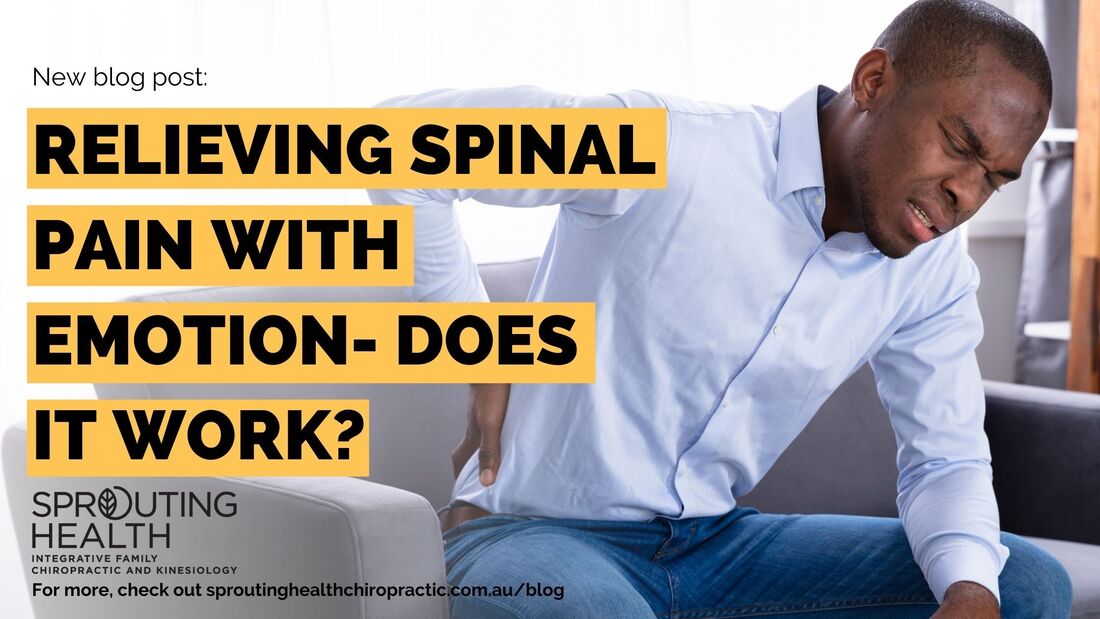|
Can dealing with emotional stress affect our spine pain?
In a number of ways, spinal problems are often compounded by the presence of stress. Among these ways are the effects of stress on the spine via the sympathetic nervous ‘fight or flee’ reaction. It is extremely interesting to note that pain is not a sensation, but rather, an emotional response. Pain and suffering are perceived in the limbic system or ‘the emotional brain.’ (1) This is true for both physical and emotional pain and suffering. There may be sensations associated with pain perception (interpreted in the somatosensory cortex), but the actual suffering that we call pain is registered in the limbic system. Pain is amplified by emotional stress because the awareness of both pain and the emotions reside in the same place in the brain and affect the limbic neuron firing rates. Hence, physical pain is amplified by emotional stress! (1) A randomized, controlled trial of Chronic Low back pain (CLBP) patients indicated that 8 Neuro Emotional Technique interventions, compared to placebo, produced clinically and statistically significant reductions in pain, disability and inflammatory biomarkers, and improvements in quality-of-life measures (2). NET is a technique we use at Sprouting Health. If you are interested in hearing more, contact our practice for an appointment and have a talk to one of our Doctors of Chiropractic. References
0 Comments
The cervical spine supports the full weight of the head yet has the greatest movement of any region of your spine. This makes it very susceptible to pain and injury such as whiplash.
Whiplash is a neck injury caused by forceful, rapid back-and-forth movement of the neck, similar to a whip cracking, hence the name. It is commonly caused by rear-end car accidents but can also result from sports accidents and other physical traumas. Whiplash may be referred to as a neck sprain or strain, but these terms also include other types of neck injuries. Symptoms of a whiplash injury can be immediate and severe, however they are often delayed. They have been known to take days, weeks, months, or even years to develop. These symptoms may include neck pain and stiffness, loss of range of motion in the neck, headaches, shoulder pain, and oftentimes low back pain as well. The exact presentation of the symptoms will vary depending on the nature of the trauma causing the injury, as well as your age and physical condition. Many studies indicate the effectiveness of chiropractic care in the management of whiplash injuries. The appropriate chiropractic treatment delivered is unique to each whiplash injury depending on the cause and presentation of the injury which is determined during a thorough examination of the patient. Treatment may include chiropractic adjustments, soft tissue techniques, and rehabilitation exercises with the aim of care being to improve mobilisation of the affected area and decrease discomfort for the patient. Because whiplash cases can present so differently, it is not possible to generalise the exact treatment involved. If you have previously had a neck injury or ongoing neck and shoulders issues due to some kind of physical trauma, whether it was a mild prang in a car or a rough tackle playing footy, have a chat with one of our chiropractors here at Sprouting Health to see if chiropractic care can help! Teasell, R. W., McClure, J. A., Walton, D., Pretty, J., Salter, K., Meyer, M., Sequeira, K., & Death, B. (2010). A research synthesis of therapeutic interventions for whiplash-associated disorder (WAD): part 4 - noninvasive interventions for chronic WAD. Pain research & management, 15(5), 313–322. https://doi.org/10.1155/2010/487279 Wong, J. J., Shearer, H. M., Mior, S., Jacobs, C., Côté, P., Randhawa, K., Yu, H., Southerst, D., Varatharajan, S., Sutton, D., van der Velde, G., Carroll, L. J., Ameis, A., Ammendolia, C., Brison, R., Nordin, M., Stupar, M., & Taylor-Vaisey, A. (2016). Are manual therapies, passive physical modalities, or acupuncture effective for the management of patients with whiplash-associated disorders or neck pain and associated disorders? An update of the Bone and Joint Decade Task Force on Neck Pain and Its Associated Disorders by the OPTIMa collaboration. The spine journal : official journal of the North American Spine Society, 16(12), 1598–1630. https://doi.org/10.1016/j.spinee.2015.08.024 Shaw, L., Descarreaux, M., Bryans, R., Duranleau, M., Marcoux, H., Potter, B., Ruegg, R., Watkin, R., & White, E. (2010). A systematic review of chiropractic management of adults with Whiplash-Associated Disorders: recommendations for advancing evidence-based practice and research. Work (Reading, Mass.), 35(3), 369–394. https://doi.org/10.3233/WOR-2010-0996 Gevers-Montoro, C., Provencher, B., Descarreaux, M., Ortega de Mues, A., & Piché, M. (2021). Clinical Effectiveness and Efficacy of Chiropractic Spinal Manipulation for Spine Pain. Frontiers in pain research (Lausanne, Switzerland), 2, 765921. https://doi.org/10.3389/fpain.2021.765921 Woodward, M. N., Cook, J. C., Gargan, M. F., & Bannister, G. C. (1996). Chiropractic treatment of chronic 'whiplash' injuries. Injury, 27(9), 643–645. https://doi.org/10.1016/s0020-1383(96)00096-4 Headache disorders in 2019 ranked 14th among global causes of disability-adjusted life years (DALYs) counting all ages and all genders.(1) The World Health Organisation reported headache disorders are among the most common disorders of the nervous system and many of these don’t get diagnosed appropriately.(2) Clinically, people who have acute headache often get a better outcome versus people who have chronic headache. The better outcome is believed to be a result of early intervention.
More known causes of headache include stress, infection, trauma and injuries. Headache is a box to tick for diagnosis of concussion; especially headaches experienced post car accident or injuries in contact sport. Furthermore, abnormal muscle tension around the head and neck region could be to blame. Headache can often be a result from bad posture, prolonged period of inactivity or an inappropriate fit of your pillow. Spinal manipulation including chiropractic care is recommended in migraine sufferers’ and in case’s where headaches are originated from the cervical region.(3) There are some lesser known causes of chronic headaches we often see in practice. We know identifying the cause of a headache is the foundation to a resolution! These are 3 tips that not many people think that can contribute to headaches. 1. Dehydration With less water intake, the concentration of toxins(metabolic waste) within our body goes up, think about alcohol consumption! This can create general hypertonicity in human body and sometimes leads to headaches. 2. Lack of sleep A study in 2011 suggested lack of sleep is linked to more painful headaches due to the decrease in rapid eye movement(REM) sleep.(4) REM sleep is believed to be helpful in long term memories, learning and mood regulation. This study found lack of sleep increase the chronic inflammation causing protein in the body, reducing pain threshold; especially for headache. 3. Vitamin B2 Vitamin B group plays an important role in supporting a healthy nervous system. Gut bacteria can produce a small amount of Vitamin B2 but far from enough for a suggested daily intake. As the human body doesn’t store vitamins, dietary intake becomes the main source for our body. In a recent systematic review, supplementation of Vitamin B2(riboflavin) is found to significantly reduce migraine days, duration and pain intensity.(5) These are great tips to stay away from headaches, there are many more reasons that can cause a headache, some can be life threatening. Newly developed headache should be taken seriously and it is recommended to consult your health professionals. If you or your loved ones experience chronic headache, give us a call and see how we can help manage your concerns! |
AuthorBlogs by the team at Sprouting Health Archives
July 2024
Categories |




 RSS Feed
RSS Feed
